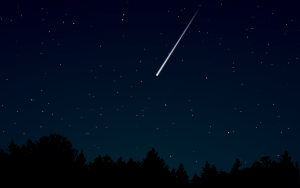
Although this is one shower you can successfully watch in the (late) evening – the best viewing is typically around 2 a.m., no matter where you are on Earth. Often, in the hours after midnight and under a dark sky, you can see 50 or more meteors per hour. Rates of 120 per hour have been reported at the peak, under optimum sky conditions.
Remember, meteors in annual showers typically come in spurts and lulls, so give yourself at least an hour of observing time. Simply sprawl out on a reclining lawn chair, look upward and enjoy the show
Meteor showers don’t require binoculars or telescopes to view — just your bare eyes. Find a comfortable spot to lie on the ground, far away from lights and ideally in a dark-sky area. Bring a blanket and dress warmly if you’re in cold weather. Give your eyes about 20-30 minutes to adjust to the dark, then sit back and enjoy the show.



